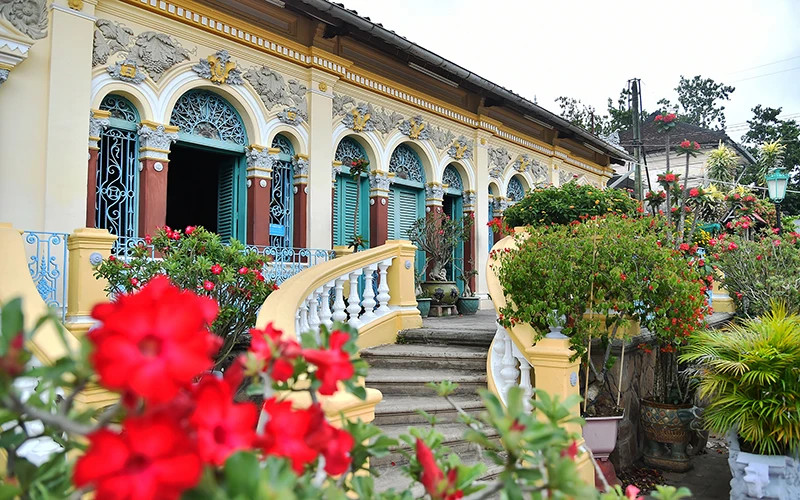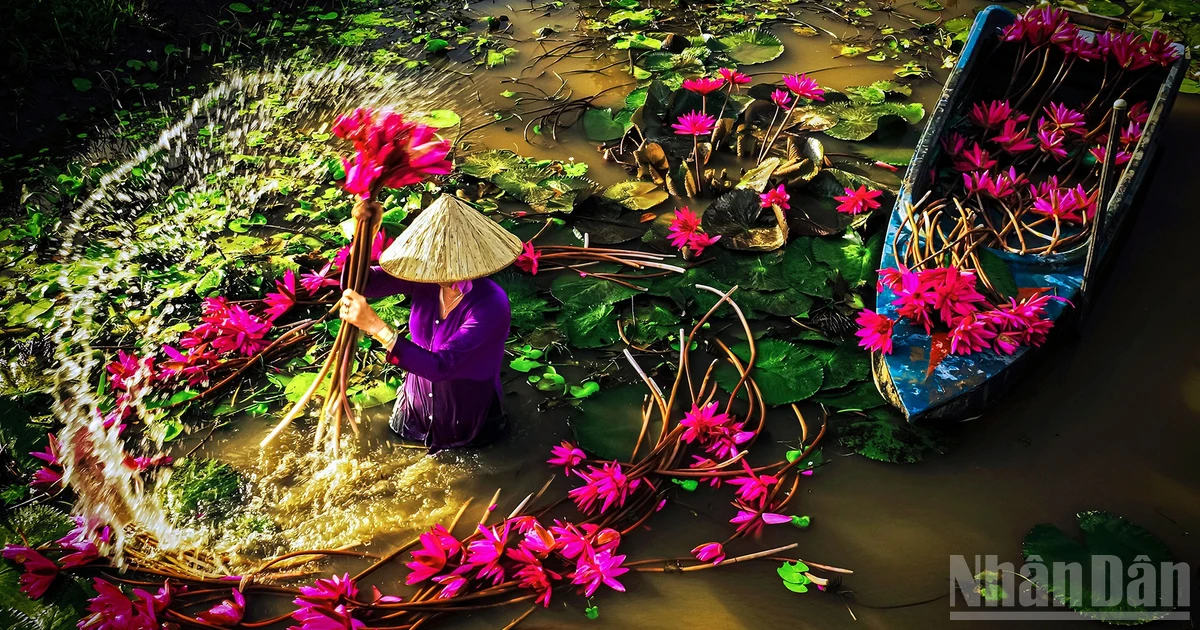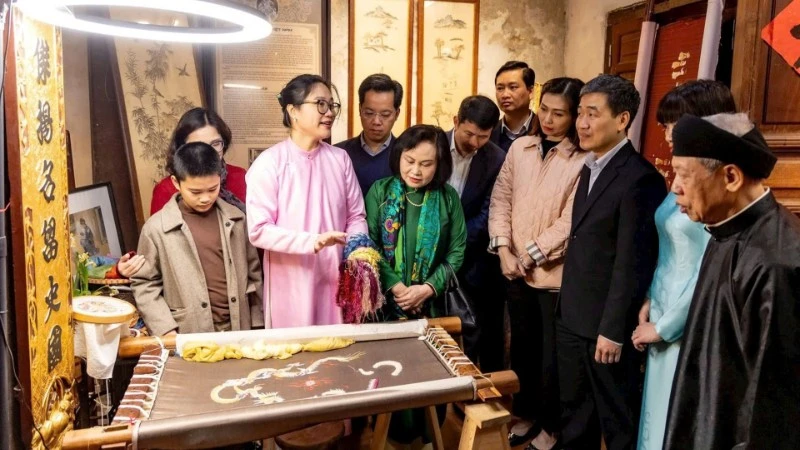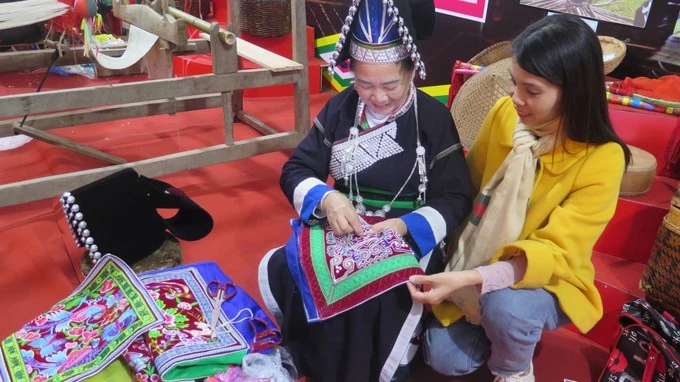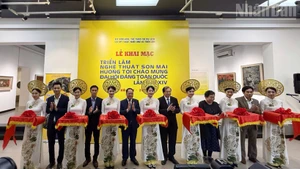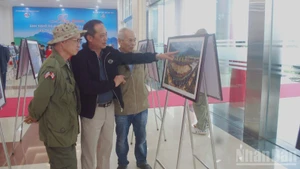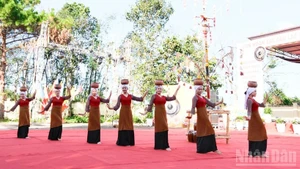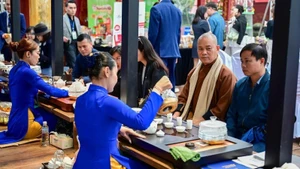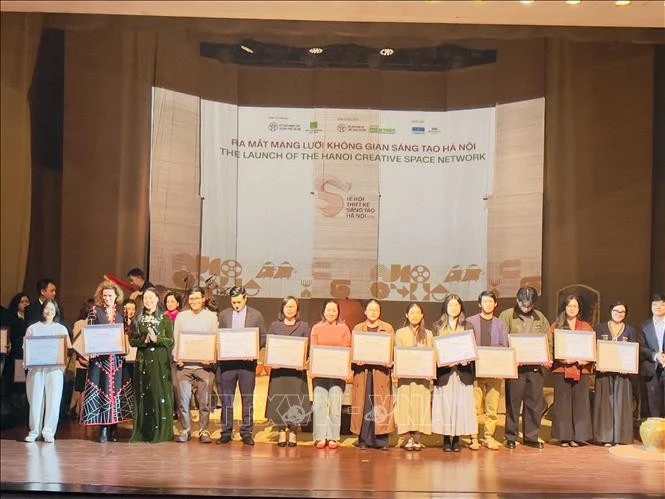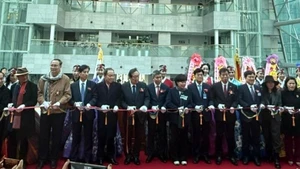The Mekong Delta currently has many old houses that remain preserved and intact, concentrated in the provinces of Tien Giang, Vinh Long, Dong Thap, Long An, Tra Vinh, and Bac Lieu as well as Can Tho City. In recent times, some houses have been preserved and put into tourism exploitation, but they are only a small number compared to the current potential.
The “Golden Age”
Most of the old houses in the Mekong Delta have unique carvings and patterns or come with interiors bearing the mark of time. However, there are not many houses that have been successfully exploited for tourism. In addition to Huynh Thuy Le Ancient House in Dong Thap, only the house of the Bac Lieu Prince in Bac Lieu City or the ancient houses of the Duong family in Binh Thuy District, Can Tho City, have promoted their value well. Over the past 100 years, these special works have continued to retain their ancient architectural features, like a "time message" from the past.
Huynh Thuy Le Ancient House in Sa Dec City, Dong Thap Province, welcomes more than 30,000 domestic and foreign visitors every year, most of whom are French, German, and American visitors. Built in 1895, the 258m² wooden house consists of three rooms shaped like a traditional Vietnamese house, with a yin-yang tiled roof and two curved gables shaped like boats in the style of Northern communal houses and temples, and is decorated inside in Chinese style.
During the major renovation in 1917, the house was rebuilt with the typical features of a French villa combined harmoniously with Oriental architecture. After many ups and downs of history, until now, the house is still preserved quite intact, becoming a symbol of a unique architecture hundreds of years ago. Thanks to the architectural beauty and the popularity of the novel "The Lover" (made into a famous film of the same name), recording the romantic love story of Mr. Huynh Thuy Le, the owner of the house, with the author — French female writer Marguerite Duras, the project has attracted large numbers of tourists since it was put into tourism exploitation.
In the group of foreign visitors to the house, we had the opportunity to talk with Ms. Barbara Steffensmeier from the US, she emotionally expressed: "It was surprising to see a building with such beautiful architecture. Our country spends a lot of time and money to preserve the past. You also need to do the same with this place..."
The ancient house of Binh Thuy in Binh Thuy District, Can Tho City, has the official name of Duong family Worship House and is also known as Duong Family Church or Orchid Garden Ancient House. It is considered the most beautiful ancient house in Tay Do with a history of more than 150 years. Built in 1870, in the early 20th century, the Duong family expanded and built a number of new items. The owner of the house is Mr. Duong Chan Ky — a wealthy intellectual merchant and landowner with an aesthetic eye — and the house is designed in the style of a luxurious French-style ancient villa.
The five-room, two-wing house was built on a total area of about 6,000m² in the east-west direction with the floor 1m higher than the garden. Although the house architecture and living room are decorated in a European style, the most important place — the altar — is purely Vietnamese, showing the harmonious and selective cultural exchange between East and West, expressing the owner's discerning aesthetic taste. This brings a unique style, clearly showing the architectural style of the transition between the 19th and 20th centuries of the wealthy class in the Mekong Delta. Binh Thuy Ancient House has been recognised as a National Artistic Monument, attracting more and more visitors.
The uniqueness of the ancient house has attracted many directors and film studios to choose this place as a filming location, such as: Alluvial Roads, The Beauty of Tay Do, and Debt of Life. The most famous is the film “The Lover” by the veteran French director Jean Jacques Annaud. This is also one of the few ancient houses that remain intact to this day, with great value in supporting research and understanding of the culture and customs of the people of the Mekong Delta.
Ms. Vu Dieu Anh from Hanoi said: “Before, I only knew about this ancient house through movies and newspapers, now I feel proud to see the unique architecture of the house with my own eyes. I hope the State will maintain and preserve it and have many tourists come to visit and admire the unique cultural features of the Mekong Delta.” Looking carefully at every detail and decoration of the house, Mr. Michael, an American tourist, was delighted: “I was really surprised by the architecture of the house. The outside is Western, the inside is Eastern, very interesting. There are very sophisticated objects in the house that we also have in our hometown but cannot compare.”
As the seventh generation of the Duong family in Binh Thuy, Can Tho city, Mr. Duong Viet Luan proudly said: “The house is like a precious gem, we always preserve it and are grateful to our grandparents for leaving it. This is also a national cultural heritage, a tourist destination known to many domestic and foreign tourists, so we need to be careful in maintenance and preservation; the family coordinates with the local cultural sector in everything we do.”
To “revive” ancient houses
Although ancient houses are valuable assets, bearing unique cultural characteristics of the Mekong Delta, many of them have not been protected or preserved. Many structures have been degraded or repaired in a modern architectural style depending on the purpose of the owner or the exploiting unit. The preservation of ancient houses has long been done by each province, patchwork and patchwork without unity or strategic direction. Faced with this reality, researchers have warned of the risk of permanent disappearance of ancient houses in the near future if conservation is not given due attention.
A representative of the Bac Lieu Provincial Monuments Management Board said that in recent years, the investment, restoration and conservation of relics in Bac Lieu has been carried out by local authorities and the cultural sector but has not met the requirements, the main reason being the lack of funding. For the number of ancient houses managed by private individuals (not yet recognised as relics), restoration and embellishment work is even more difficult. Many ancient houses are degraded and severely damaged, but the owners do not have the necessary funds nor knowledge in the field of restoration, while the local authorities have not had any support policies. In some cases, when the relevant authorities mentioned support for maintenance and conservation according to the State's policy, the owners of ancient houses did not agree and wanted to repair them themselves according to their own ideas.
In reality, the ancient houses are all owned by the people, so many opinions say that in order to protect them, local authorities must actively participate, promptly conduct surveys, make lists and evaluate the current status of each house. In addition, it is necessary to propagate and educate people to be aware of the historical and cultural value of ancient houses to make efforts to preserve them. Only when they fully understand and benefit from the relics will they be determined to preserve them. Another important thing is to have investment and consult experts for restoration and repair.
Conservation work requires the mobilisation of resources, linking conservation with tourism development, exploiting the potential of these valuable works so that the cultural and historical imprints of ancient houses in the South can truly "revive". Since 2006, Dong Thap Province has exploited the "Following the footsteps of the Lover" tour to visit Huynh Thuy Le Ancient House. Every day, this place welcomes more than 1,000 visitors, more than 50% of whom are foreign visitors.
In Can Tho City, tourists visiting Binh Thuy Ancient House, especially foreign visitors, are very interested in the ancient Southern style of the house, sitting on a hundred-year-old sofa, sipping tea, and tasting traditional cakes or fruits in the backyard. Currently, the family is managing and exploiting it for tourism. A few companies have also supported the restoration and preservation of the ancient house quite well in a mutually beneficial direction. That shows that exploiting the value of ancient houses is not impossible, but the problem is whether the functional sectors and the owners of the ancient houses are interested and join hands or not?
According to statistics, in Dong Thap Province, there are currently 96 communal houses and 76 ancient houses. The Provincial People's Committee has just issued a plan on promoting the cultural heritage values of communal houses and ancient houses in combination with tourism development in Dong Thap Province in the 2024-2025 period to preserve, maintain and promote traditional cultural identity in a sustainable manner, creating resources to contribute to socio-economic development. Accordingly, it will organise tours and tourist routes connecting relic sites, museums and cultural heritages of communal houses and ancient houses in the province with neighbouring localities; and encourage travel agencies to survey and learn about relics with potential for exploitation.
Although difficult, if determined to implement solutions, the hundreds of years old ancient houses in the Mekong Delta will have the conditions to "revive" in contemporary life.
